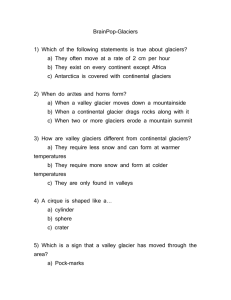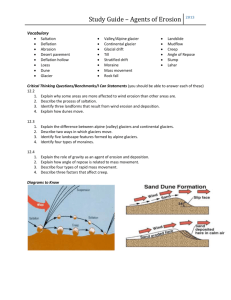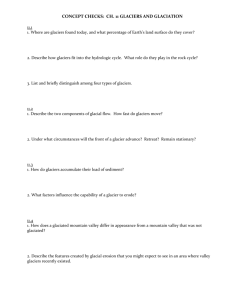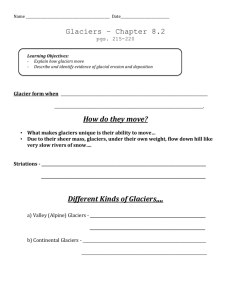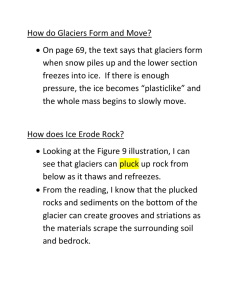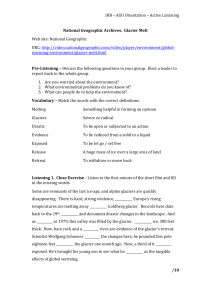03/2014 - International Hydrographic Organization
advertisement
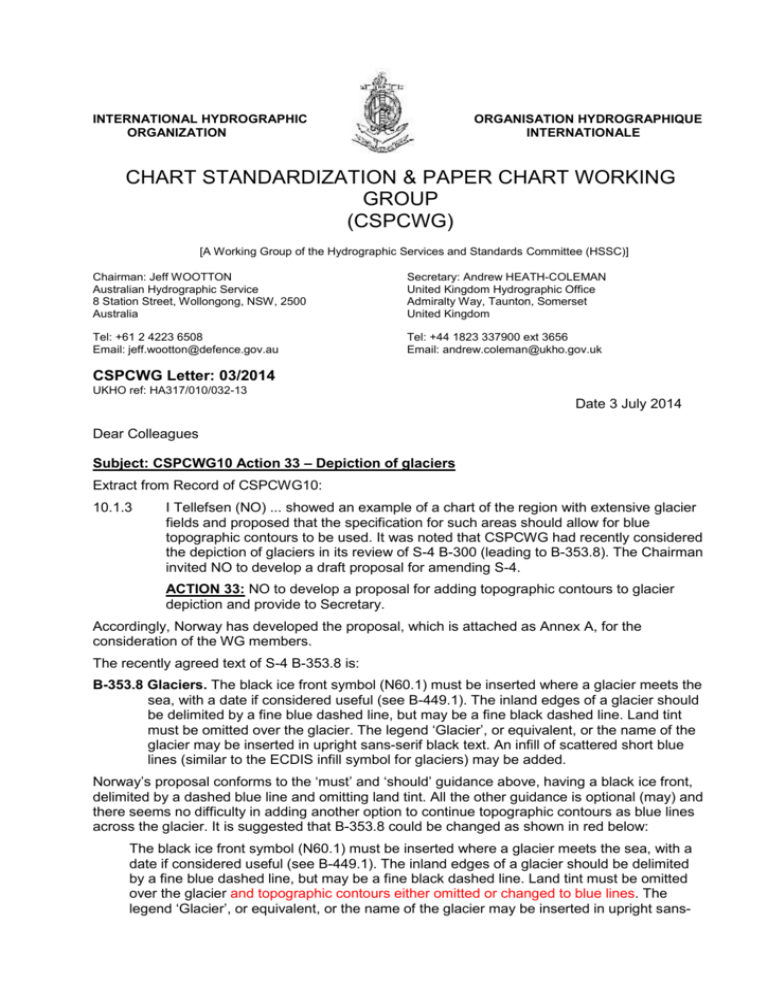
INTERNATIONAL HYDROGRAPHIC ORGANIZATION ORGANISATION HYDROGRAPHIQUE INTERNATIONALE CHART STANDARDIZATION & PAPER CHART WORKING GROUP (CSPCWG) [A Working Group of the Hydrographic Services and Standards Committee (HSSC)] Chairman: Jeff WOOTTON Australian Hydrographic Service 8 Station Street, Wollongong, NSW, 2500 Australia Secretary: Andrew HEATH-COLEMAN United Kingdom Hydrographic Office Admiralty Way, Taunton, Somerset United Kingdom Tel: +61 2 4223 6508 Email: jeff.wootton@defence.gov.au Tel: +44 1823 337900 ext 3656 Email: andrew.coleman@ukho.gov.uk CSPCWG Letter: 03/2014 UKHO ref: HA317/010/032-13 Date 3 July 2014 Dear Colleagues Subject: CSPCWG10 Action 33 – Depiction of glaciers Extract from Record of CSPCWG10: 10.1.3 I Tellefsen (NO) ... showed an example of a chart of the region with extensive glacier fields and proposed that the specification for such areas should allow for blue topographic contours to be used. It was noted that CSPCWG had recently considered the depiction of glaciers in its review of S-4 B-300 (leading to B-353.8). The Chairman invited NO to develop a draft proposal for amending S-4. ACTION 33: NO to develop a proposal for adding topographic contours to glacier depiction and provide to Secretary. Accordingly, Norway has developed the proposal, which is attached as Annex A, for the consideration of the WG members. The recently agreed text of S-4 B-353.8 is: B-353.8 Glaciers. The black ice front symbol (N60.1) must be inserted where a glacier meets the sea, with a date if considered useful (see B-449.1). The inland edges of a glacier should be delimited by a fine blue dashed line, but may be a fine black dashed line. Land tint must be omitted over the glacier. The legend ‘Glacier’, or equivalent, or the name of the glacier may be inserted in upright sans-serif black text. An infill of scattered short blue lines (similar to the ECDIS infill symbol for glaciers) may be added. Norway’s proposal conforms to the ‘must’ and ‘should’ guidance above, having a black ice front, delimited by a dashed blue line and omitting land tint. All the other guidance is optional (may) and there seems no difficulty in adding another option to continue topographic contours as blue lines across the glacier. It is suggested that B-353.8 could be changed as shown in red below: The black ice front symbol (N60.1) must be inserted where a glacier meets the sea, with a date if considered useful (see B-449.1). The inland edges of a glacier should be delimited by a fine blue dashed line, but may be a fine black dashed line. Land tint must be omitted over the glacier and topographic contours either omitted or changed to blue lines. The legend ‘Glacier’, or equivalent, or the name of the glacier may be inserted in upright sans- serif black text. An infill of scattered short blue lines (similar to the ECDIS infill symbol for glaciers) may be added if blue contours are not shown. An additional graphic would then be required in S-4, based on the right hand graphic in Norway’s proposal for INT1. In INT1, the publisher would choose which graphics to include, in accordance with their national practice (including obsolete practices, if necessary). Please respond to this letter by 28 August 2014, using the response form at Annex B. Yours sincerely, Jeff Wootton, Chairman Annex A to CSPCWG Letter 03-2014 CSPCWG10 Action 33 Paper for Consideration by CSPCWG / INT 1 Sub-WG Proposal on adding topographic contours to glaciers Submitted by: Executive Summary: Related Documents: Related Projects: Norway Norway has big glaciers to be presented in charts. Using the INT1 glaciers symbol is not the best way of showing these glaciers. Norwegian charts have shown blue contour lines on glaciers for many years. CSPCWG10 Report, 10.1.3. S4 and INT 1 C25 None Glaciers INT1 C-25 shows glaciers with a pattern in blue for multi coloured charts or in black for other charts. Norwegian charts have shown glaciers with the correct contour lines as they were delivered to NHS from the Norwegian Polar Institute and the Norwegian Mapping Authority. These contour lines are shown in blue colour in Norwegian national charts. Norway has big areas of glaciers in charts. Using the symbol for glaciers as in S-4 and INT1 does not show glaciers as optimal as they could be presented. Glaciers as in Norwegian INT1 (2013) – C25 The chart production system used in Norway gives us a massive pattern of blue lines like this: This pattern on large glaciers will make the glacier area look more like a lake or a shallow water area. Blue contour lines on glaciers as presented in NO charts for many years: The use of blue contour lines may give the mariners a picture of how the terrain of the glacier actually is like. NO INT 1 – C25 Conclusions None. Recommendations CSPCWG to consider whether a change to INT1 - C25 should be made. NO recommends altering C-25 as shown above. S4 – B-353.8 to be altered accordingly. Justification and Impacts None. Action required of CSPCWG The CSPCWG / INT1 Sub WG is invited to discuss the issue, consider the recommendation and agree on further actions, if any. Annex B to CSPCWG Letter 03/2014 CSPCWG10 Action 33: Depiction of glaciers Response Form (please return to CSPCWG Secretary by 28 August 2014) andrew.coleman@ukho.gov.uk Question Do you agree that topographic contours may be continued across glaciers in blue as an option? Do you agree with the proposed rewording of B-353.8? Do you agree that INT1 producers should select which graphics to show in accordance with their own national practice? Further comments: Name: Member State: Yes No
